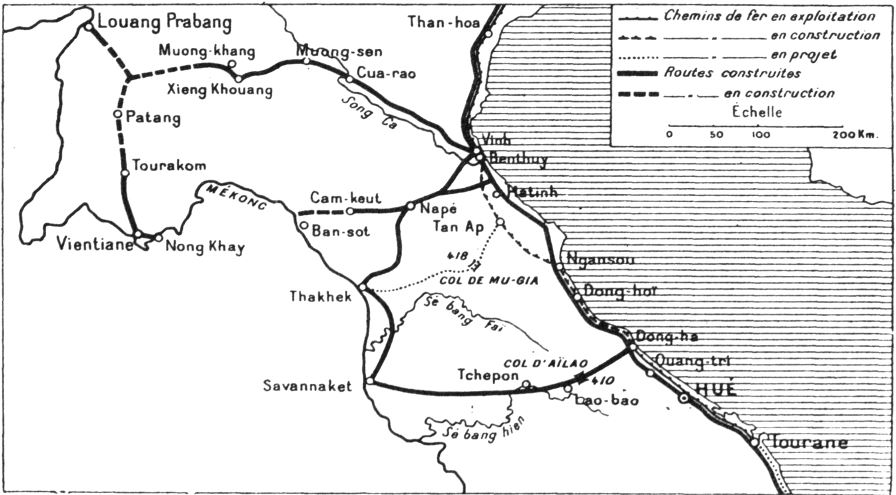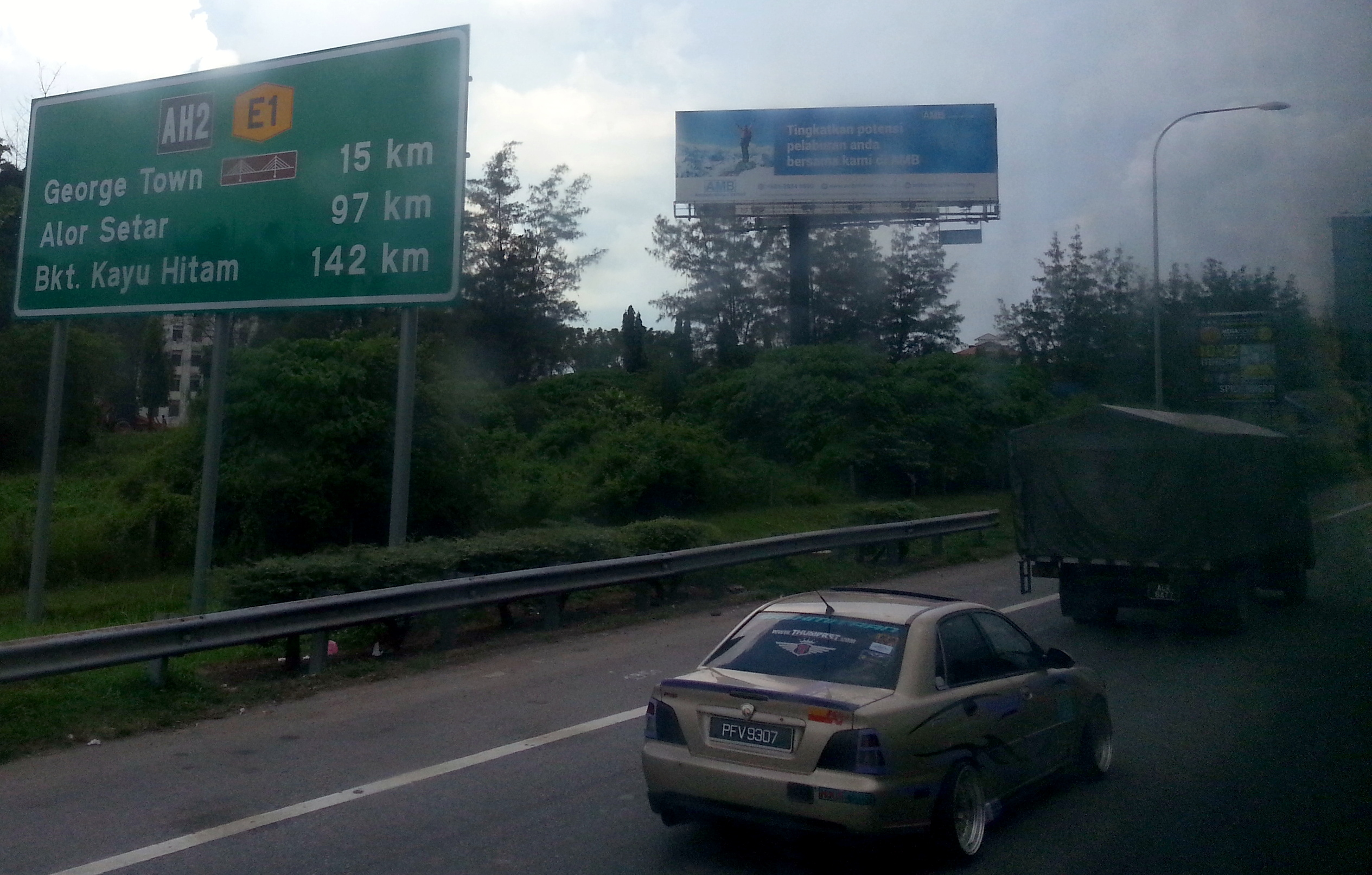|
Route 13 (Laos)
Route 13 is the most important highway in Laos. It begins at Boten in northern Laos at the Chinese border. It connects the city of Vientiane to Luang Prabang in the north and roughly follows the line of the Mekong River down to the border with Cambodia. The road then continues at National Highway 7 in Cambodia. Route 13 passes the New Laos National Stadium at Vientiane prefecture and all three international airports in Laos Vientiane Airport, Luang Prabang Airport, and Pakse Airport. Between Boten and Nateuy a 20 km segment of Route 13 is part of the Kunming-Bangkok Expressway, ( Asian Highway AH3). From Nateuy to Vientiane, Route 13 is part of AH12 and from Vientiane to the border of Cambodia, AH11. It roughly parallels to Vientiane-Boten Expressway. Route 13 passes through the cities of Vientiane, Vang Vieng, Phoukhoune district where is intersection of Route 7 (Laos) Route 7 of Laos, ເສັ້ນ ທາງ ເລກ 7 ຂອງປະເທດ� ... [...More Info...] [...Related Items...] OR: [Wikipedia] [Google] [Baidu] |
Vientiane Prefecture
Vientiane (or ''Viengchan'', Also known as ''Vientiane Prefecture'' or ''Vientiane Municipality'') ( Lao: ນະຄອນຫຼວງວຽງຈັນ, ''Nakhônlouang ViangChan'') is a prefecture of Laos, in the northwest Laos. The national capital, Vientiane, is in the prefecture. The prefecture was created in 1989, when it was split off from Vientiane province. On a curve of the Mekong River, and bordering Thailand, the prefecture covers an area of . Vientiane city was built in the 16th century in the reign of King Saysethathirath. The older part of the city has ancient temples, museums, monuments and parks. Protected areas in the prefecture include Phou Khao Khouay National Protected Area, Phou Phanang National Protected Area, and Houay Ngang Forest Reserve, a good area for bird and butterfly watching. The prefecture is the site of the First Thai–Lao Friendship Bridge spanning the Mekong to connect with Nong Khai Province, Thailand and the New Laos National Stadi ... [...More Info...] [...Related Items...] OR: [Wikipedia] [Google] [Baidu] |
Milestone
A milestone is a numbered marker placed on a route such as a road, railway, railway line, canal or border, boundary. They can indicate the distance to towns, cities, and other places or landmarks; or they can give their position on the route relative to some datum location. On roads they are typically located at the side or in a Central reservation, median or central reservation. They are alternatively known as mile markers, mileposts or mile posts (sometimes abbreviated MPs). A "kilometric point" is a term used in Metrication, metricated areas, where distances are commonly measured in kilometres instead of miles. "Distance marker" is a generic unit-agnostic term. Milestones are installed to provide linear referencing points along the road. This can be used to reassure travellers that the proper path is being followed, and to indicate either distance travelled or the remaining distance to a destination. Such references are also used by maintenance engineers and emergency se ... [...More Info...] [...Related Items...] OR: [Wikipedia] [Google] [Baidu] |
Route 7 (Laos)
Route 7 of Laos, ເສັ້ນ ທາງ ເລກ 7 ຂອງປະເທດລາວ (ທ. 7) is a provincial road served from east to west in Xiangkhouang province, Laos. It runs from Nong Het in the east to Phoukhoune District in the west. This is where people change connections to go to Luang prabang or Vientiane. History Route 7 (Laos) is built in the early 1905 by a Resident, Mr. ''Sestier''. It started from Vinh to Cua-rao, Vietnam, then to Muong-sen and Tran-Ninh, the former capital of Xieng khouang at the time, in XiangKhouang province, Laos, for a distance of 402 kilometers. During construction, a credit of 300,000 piastres was granted by Mr. Beau, one of the Governor Generals of Indochina at the time. Subsequently, the road was abandoned due to costly maintenance and upkeep. Afterwards, in 1911, it was taken over by a vigorous administrator-creator, Mr. Barthelemy, government commissioner of the Laotian province of Tran-Ninh (Xiangkhouang Plateau), XiangK ... [...More Info...] [...Related Items...] OR: [Wikipedia] [Google] [Baidu] |
Phoukhoune District
Phoukhoune is a district (''muang Mueang ( th, เมือง ''mɯ̄ang'', ), Muang ( lo, ເມືອງ ''mɯ́ang'', ; Tai Nuea: ᥛᥫᥒᥰ ''muang''), Mong ( shn, ''mə́ŋ'', ), Meng () or Mường (Vietnamese), were pre-modern semi-independent city-states or principal ...'') of Luang Prabang province in northern Laos. References Districts of Luang Prabang province {{Laos-geo-stub ... [...More Info...] [...Related Items...] OR: [Wikipedia] [Google] [Baidu] |
Vang Vieng
Vang may refer to: People Vang is a common surname among Hmong Americans, including * Vang Pao (1929–2011), Lieutenant General in the Royal Lao Army and a leader of the Hmong American community in the United States * Ka Vang (born 1975), writer * Chai Vang (born 1968), convicted murderer * Bee Vang (born 1991), actor, best known as Thao Vang Lor in ''Gran Torino'' * Katie Ka Vang, artist, playwright * Bora Vang (born 1987), Chinese-born Turkish table tennis player Places * Vang, Bornholm, a village on the island of Bornholm, Denmark *Vang, Innlandet, a municipality in Innlandet county, Norway ** Vang i Valdres, a village in the municipality of Vang in Innlandet county, Norway * Vang, Hedmark, a former municipality in the old Hedmark county, Norway *Vang, a village in Ka Choun, Cambodia * Vəng (other), a list of similarly-named places in Azerbaijan Other *Vang (spritsail), a sailing part *Boom vang, a sailing part * Gaff vang, a sailing part *D-alanine—D-serine liga ... [...More Info...] [...Related Items...] OR: [Wikipedia] [Google] [Baidu] |
AH11
Asian Highway 11 (AH11) is a road in the Asian Highway Network running 1567 km from Vientiane, Laos to Sihanoukville, Cambodia connecting AH12 to AH1 and continuing to Gulf of Thailand. This international highway connects capitals of Laos and Cambodia. Laos * : Vientiane - Vieng Kham (Concurrency with begins) - Thakhek (Concurrency with ends) - Xeno (concurrent with for 3 km) - Veun Kham. Cambodia * Highway 7: Dong Calor - Skuon. * Highway 6 Route 6, or Highway 6, may refer to routes in the following countries: International * Asian Highway 6 * European route E6 * European route E006 Albania * National Road SH6 Argentina * Buenos Aires Provincial Route 6 Australia New ...: Skuon - Phnom Penh () * Highway 4: Phnom Penh - Sihanoukville Junctions ;Laos : Vientiane : Ban Lao : Thakhek : Seno ;Cambodia : near Harbin See also * List of Asian Highways References External links Treaty on Asian Highways with routes Asian Hi ... [...More Info...] [...Related Items...] OR: [Wikipedia] [Google] [Baidu] |
AH12
Asian Highway 12 (AH12) is a route of the Asian Highway Network, with a length of 1,195 km (747 miles) that runs from AH3 in Nateuy, Laos, through Muang Xay, Luang Prabang, Vang Vieng, Vientiane, Nong Khai, Udon Thani, Khon Kaen, Nakhon Ratchasima, and Saraburi until its terminus at AH1 in Nong Khae District, Saraburi Province, Thailand. The highway has been in use since 8 April 1994. Its US$30 million cost was financed by Laos and Thailand, apart from the First Thai-Lao Friendship Bridge, funded by the Australian government as International development, development aid for Laos. Sections Laos * : Nateuy–Vientiane * Route 450 (Laos), Route 450: Vientiane–Thanaleng (Vientiane Prefecture), First Thai–Lao Friendship Bridge Thailand * (Mittraphap Road): Nong Khai–Saraburi * (Phahonyothin Road): Saraburi–Hin Kong, Nong Khae District References {{AHN Roads in Laos Roads in Thailand Asian Highway Network ... [...More Info...] [...Related Items...] OR: [Wikipedia] [Google] [Baidu] |
Asian Highway
The Asian Highway Network (AH), also known as the Great Asian Highway, is a cooperative project among countries in Asia and the United Nations Economic and Social Commission for Asia and the Pacific (ESCAP) to improve their connectivity via highway systems. It is one of the three pillars of the Asian Land Transport Infrastructure Development (ALTID) project, endorsed by the ESCAP commission at its 48th session in 1992, comprising Asian Highway, Trans-Asian Railway (TAR) and facilitation of land transport projects. Agreements have been signed by 32 countries to allow the highway to cross the continent and also reach to Europe. Some of the countries taking part in the highway project are India ( Look-East connectivity projects), Sri Lanka, Pakistan, China, Iran, Japan, South Korea, Nepal and Bangladesh. Most of the funding comes from the larger, more advanced Asian nations such as China, South Korea and Singapore as well as international agencies such as the Asian Development ... [...More Info...] [...Related Items...] OR: [Wikipedia] [Google] [Baidu] |


